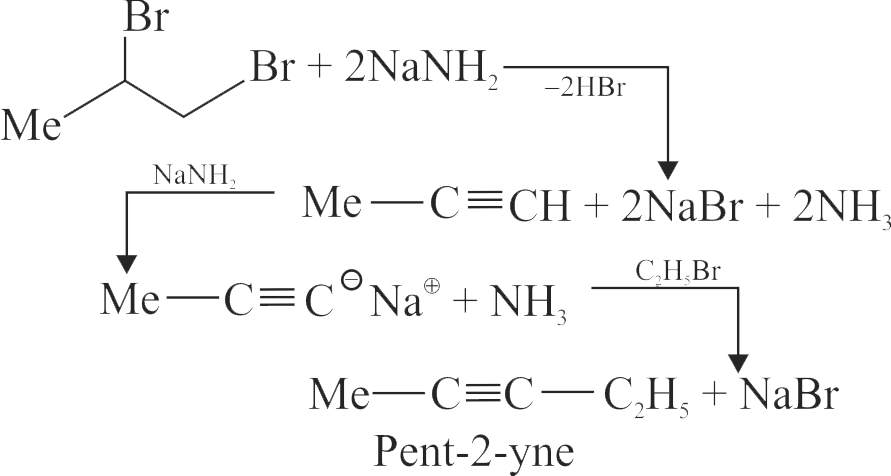322409 An unknown alkyl halide (A) reacts with alcoholic \(\mathrm{KOH}\) to produce a hydrocarbon \(\left(\mathrm{C}_{4} \mathrm{H}_{8}\right)\). Ozonolysis of the hydrocarbon affords one mole of propionaldehyde and one mole of formaldehyde. Suggest which organic structure among the following is the correct structure of the above alkyl halide( \(\mathrm{A})\) ?
322409 An unknown alkyl halide (A) reacts with alcoholic \(\mathrm{KOH}\) to produce a hydrocarbon \(\left(\mathrm{C}_{4} \mathrm{H}_{8}\right)\). Ozonolysis of the hydrocarbon affords one mole of propionaldehyde and one mole of formaldehyde. Suggest which organic structure among the following is the correct structure of the above alkyl halide( \(\mathrm{A})\) ?
322409 An unknown alkyl halide (A) reacts with alcoholic \(\mathrm{KOH}\) to produce a hydrocarbon \(\left(\mathrm{C}_{4} \mathrm{H}_{8}\right)\). Ozonolysis of the hydrocarbon affords one mole of propionaldehyde and one mole of formaldehyde. Suggest which organic structure among the following is the correct structure of the above alkyl halide( \(\mathrm{A})\) ?
322409 An unknown alkyl halide (A) reacts with alcoholic \(\mathrm{KOH}\) to produce a hydrocarbon \(\left(\mathrm{C}_{4} \mathrm{H}_{8}\right)\). Ozonolysis of the hydrocarbon affords one mole of propionaldehyde and one mole of formaldehyde. Suggest which organic structure among the following is the correct structure of the above alkyl halide( \(\mathrm{A})\) ?
322409 An unknown alkyl halide (A) reacts with alcoholic \(\mathrm{KOH}\) to produce a hydrocarbon \(\left(\mathrm{C}_{4} \mathrm{H}_{8}\right)\). Ozonolysis of the hydrocarbon affords one mole of propionaldehyde and one mole of formaldehyde. Suggest which organic structure among the following is the correct structure of the above alkyl halide( \(\mathrm{A})\) ?

